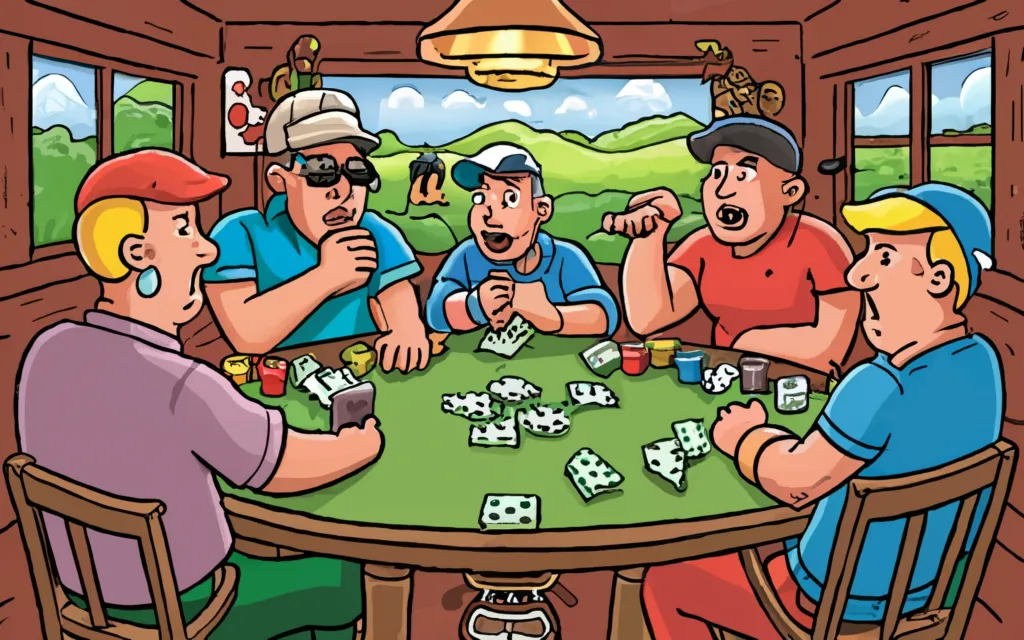Introduction
The Golf card game is a captivating mix of strategy and chance, appealing to players of all ages. With simple rules and engaging gameplay, it has gained a solid following in social settings and competitive circles. This article aims to provide a comprehensive understanding of the Golf card game, its rules, effective strategies, and common pitfalls to steer clear of for a better gaming experience.
Understanding the Basics of Golf Card Game
The Origin and Popularity of Golf Card Game
The origins of the Golf card game can be traced back to the early 20th century, though its specifics remain somewhat nebulous. Some credit American influences, while others argue it stems from European card games. The game reached its height of popularity in the 1960s, often played in casual settings such as family gatherings, community events, and friendly outings, making it a staple among various age groups.
Today, the game enjoys a resurgence with the advent of modern technology, as online platforms and mobile applications introduce this classic game to a new audience. Its accessible nature, combined with the social aspect of gameplay, keeps it popular in both casual and more strategic gaming environments. The rise of social media has also played a role in revitalizing interest, as players share their experiences and strategies, fostering a community around the game that spans generations.
Essential Equipment for Playing Golf Card Game
To play Golf, you need minimal equipment, making it quite approachable. The essential items include:
- A standard deck of 52 playing cards
- A scoreboard and writing instrument for keeping track of points
- Optional: chips or tokens for betting or stakes
Each player typically sits around a table, and the number of players can range from 2 to 6. The simplicity of the required materials is a significant factor in the game’s enduring appeal. Furthermore, the game’s flexibility allows for various house rules, which can enhance the experience and adapt it to different player preferences. For instance, some groups may choose to play with wild cards or introduce unique scoring methods, adding layers of strategy and excitement to each session.
Moreover, the social dynamics of the game can lead to memorable interactions, as players engage in friendly banter and playful competition. The relaxed atmosphere often encourages storytelling and laughter, making it not just a game of skill, but also a means of bonding with friends and family. As players become more familiar with each other’s styles and strategies, the game evolves, creating a rich tapestry of shared experiences that contribute to its lasting popularity.
Decoding the Rules of Golf Card Game
The Objective of the Game
The primary aim in Golf is to accumulate the fewest points possible over several rounds, with the last round often called the “final hole.” Each player aims to have a lower total score than their opponents by the end of the game. The game is typically played over nine or eighteen rounds, echoing its namesake sport.
Players are dealt cards facedown, and each round consists of drawing and discarding cards in a quest to replace high-value cards with low ones, thereby minimizing scores.

Scoring System in Golf Card Game
In Golf, each card has a specific point value:
- Number cards (2-10): face value points
- Face cards (Jacks, Queens, Kings): 10 points each
- Aces: 1 point
The total points are calculated based on the cards players have face up at the end of each round. At the end of the entire game, the player with the lowest score wins.
Developing Winning Strategies for Golf Card Game
Importance of Positioning in the Game
Positioning is critical in Golf, especially how players arrange their cards. It’s beneficial to keep your highest point cards in a position that is easy to change quickly, allowing for flexibility during the game. An organized hand helps in quick processing during your turn, facilitating better decision-making.
Additionally, the order in which cards are revealed can affect the strategies employed by opponents, as they may be more cautious if they perceive someone’s hand to be low-scoring.
Mastering the Art of Discarding and Drawing
When discarding and drawing cards, players should be strategic. Keeping track of what cards have already been discarded helps in predicting opponents’ moves. The art lies in knowing when to draw from the pile and when to take a chance with the face-up cards from opponents.
Don’t neglect the importance of bluffing. Sometimes, discarding a low card can mislead opponents into thinking you are holding high cards, giving you a strategic advantage.
Advanced Tips to Excel in Golf Card Game
Reading Your Opponent’s Moves
Being observant and reading the body language or facial expressions of your opponents can provide insights into their strategies. Look for signs that might indicate whether they are pleased or displeased with a drawn card. This can provide clues about the potential composition of their hand.
Additionally, keeping track of patterns in their gameplay can help in predicting future moves. For instance, if a player consistently keeps high cards, it may indicate their confidence in their hand strength.
Managing Your Hand Effectively
A well-managed hand is crucial. Always strive to maintain a balance between high and low cards. If you accumulate too many high-value cards, shift your strategy towards drawing lower-value cards to decrease the potential score quickly.
Moreover, monitoring the draw pile and what cards come into play can provide strategic insights on how best to hold or trade cards with fellow players.
Common Mistakes to Avoid in Golf Card Game
Overlooking the Importance of Low Cards
A common misstep for new players is undervaluing low cards. They may chase higher-value cards in hopes of improving their hand, but this often backfires. Low cards can significantly decrease your score and should be regarded as valuable assets in your hand.
Always aim to replace high cards with low ones whenever possible, as this keeps your score down throughout the rounds.
Mismanaging the Draw Pile
Another critical mistake involves neglecting the draw pile’s history. Failing to keep track of which cards have already been drawn can lead to poor choices. Effective management of the draw pile can significantly increase your strategic advantage over opponents.
Always ask yourself why you need a specific card—are you following a pattern, or do you simply hope it will make your hand better? The answers will guide you toward smarter decisions that enhance gameplay.
With dedication to learning the rules, applying strategies, and avoiding common errors, mastering the Golf card game becomes within reach. Enjoy the camaraderie of the game while competing for the least points, and remember that practice and observation are critical in refining your gameplay skills.
Conclusion
The golf card game offers a fun and engaging way to enjoy time with friends and family while also developing strategic thinking and social interaction skills. Its simple rules and quick gameplay make it accessible to players of all ages and skill levels. By incorporating elements of chance and skill, the game remains exciting and unpredictable, ensuring that each session is unique. Whether played casually or competitively, the golf card game serves as a perfect way to bond with others, unwind, and challenge oneself. Its versatility and appeal make it a timeless choice for game nights, gatherings, and casual play alike.

Leave a Reply